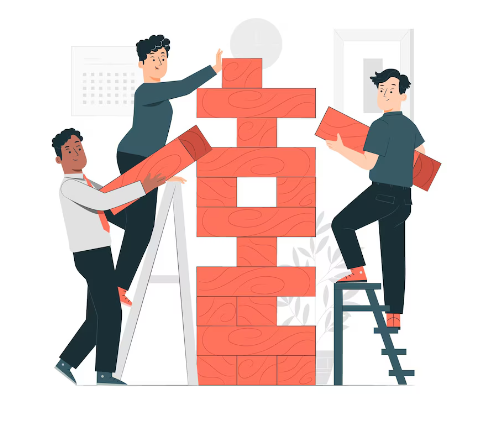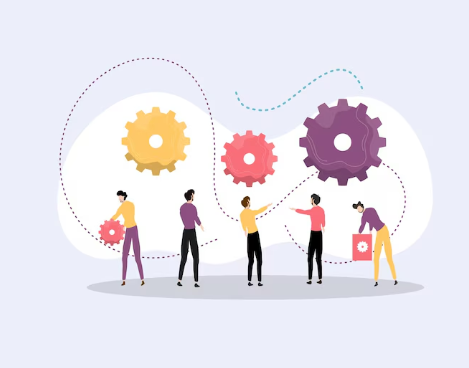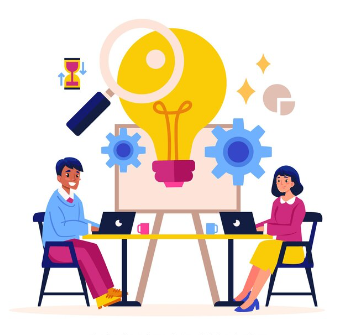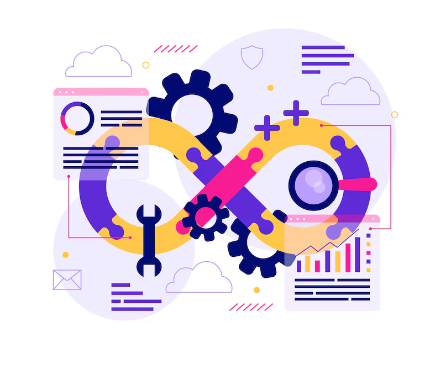Organizational Development Training

Why Organizational Development Matters
Organizational development strategy is crucial for the success and growth of any company. It involves analyzing and improving various aspects of the organization, such as its structure, culture, and processes, to enhance its overall performance. By investing in organizational development, companies can ensure that they remain competitive and sustainable over the long term.
Our Organizational Development Training Courses
Human Resource Management
HRM is a crucial aspect of organizational development as it manages the organization's most important asset- its employees. HRM aligns HR policies with business goals, fosters a positive work environment, manages change, and supports continuous improvement and innovation. Our HRM programs are geared towards:
- Employee engagement:Promoting employee involvement and commitment to their work and the organization.
- Employee experience:Ensuring employees have a positive and fulfilling experience at work.
- Performance management: Managing employee performance to achieve organizational goals and objectives.
- Employee development: Supporting employees to develop their skills and knowledge to enhance their performance.
- Succession planning:Identifying and developing potential future leaders to ensure business continuity.
- Coaching and mentoring: Providing guidance and support to employees to enhance their skills and performance.
- Career development:Offering opportunities for employees to advance their careers within the organization.


Techno-structural Intervention
Techno-structural interventions are critical for aligning an organization's structure, technology, and processes with its goals. They're often deployed when change is necessary for a company's survival or competitive edge. These interventions include restructuring, process redesign, and implementing new technologies to prove efficiency and streamline workflows. At Radiant Techlelearning, our Technostructural intervention addresses the following three specific areas:
- Organizational restructuring: It involves making significant changes to an organization's structure, such as merging departments, downsizing, or creating new teams. The goal is to optimize the organization's efficiency, effectiveness, and alignment with its goals.
- Business process reengineering: This helps redesign of an organization's processes to improve efficiency, productivity, and quality. It involves analysing current processes, identifying areas of improvement, and implementing new processes that better align with the organization's goals.
- Work design interventions: It refers to the process of designing jobs and work environments to improve employee well-being, job satisfaction, and productivity. This can include changes to work schedules, job responsibilities, workspaces, and more, with the goal of optimizing the work experience for employees while improving organizational outcomes.
Strategic Change
Strategic change is a deliberate and planned process of moving a company away from its current state towards a desired future state in order to increase its competitive advantage. These initiatives may involve significant changes to the organization's structure, culture, and leadership, and are typically focused on improving performance, increasing competitiveness, and sustaining growth over time. Our strategic change interventions include the following:
- Organization transformation:Significant changes to an organization's structure, processes, and systems to better align with goals and objectives. Examples include merging departments, reorganizing reporting structures, and implementing new technology.
- Culture change:Changing the way employees think, behave, and interact with each other and the organization. This could involve implementing new values, beliefs, or norms, or changing the physical environment to better reflect the desired culture.
- Leadership development: Initiatives designed to improve the skills, knowledge, and abilities of leaders within the organization. This could involve training programs, coaching, mentoring, or other development activities.
- Attraction and retention initiatives: Interventions designed to attract and retain top talent within the organization. Examples include changes to compensation and benefits packages, flexible work arrangements, or other initiatives to improve the employee experience.


Human Process
Human process interventions is a vital part of organizational development. This foster effective interpersonal relationships and optimize team performance dynamics. These interventions focus on improving the quality of relationships, communication, and collaboration among employees within an organization. Our human process interventions include the following:
- Individual interventions: Coaching or mentoring provided to a particular employee to address counterproductive interpersonal behaviours, new employee onboarding, internal role transitions, or performance improvement.
- Group interventions: Aimed at the content, structure, or process of a group, such as professional development coaching, employee training, or change management exercises. Often necessary during department restructuring or communication of new job responsibilities.
- Organizational interventions: Essential for organization-wide changes, such as implementing a new strategy, rolling out new software, or implementing structural changes. These interventions may include employee wellness programs or engaging third-party experts.
Our Organizational Development Approach
Our OD intervention strategy involves integrating OD skills with L&D, performance improvement, and talent management solutions to increase organizational effectiveness. The strategy follows a structured five-phase process for designing and implementing organizational development strategies:
- Entry: Initial contact between consultant and client to identify the problem, opportunities, or situation, and establish project scope through an engagement contract or project plan.
- Diagnosis: Collaborative data gathering process between organizational stakeholders and the consultant to gather, analyze, and review relevant information about the presenting problem.
- Feedback:Return of analyzed information to the client, exploration of the data for understanding, and review of preliminary agreements about scope and resource requirements. Outputs include an action plan outlining change solutions and success indicators.
- Solution:Design, development, and implementation of solutions to improve organizational performance and seize opportunities. Outputs may include a communication plan, training curriculum, implementation plan, and evaluation plan.
- Evaluation:Continuous data collection to determine whether the initiative is meeting intended goals and achieving success indicators. Outputs include an evaluation report with recommendations for continuous improvement.







